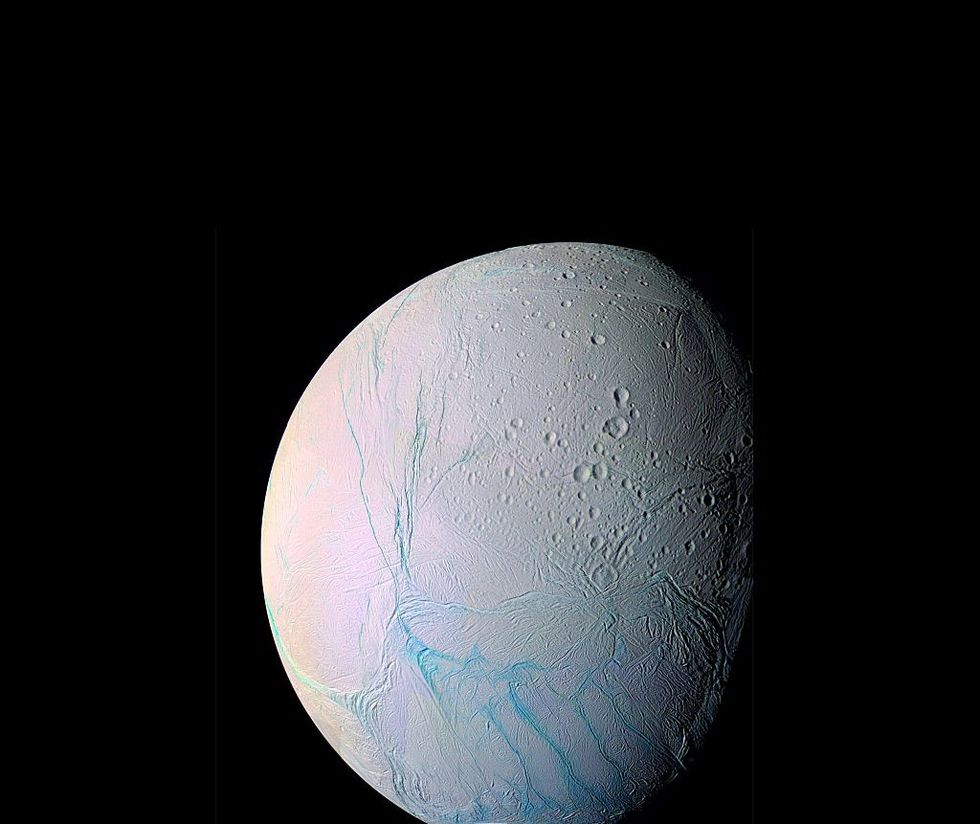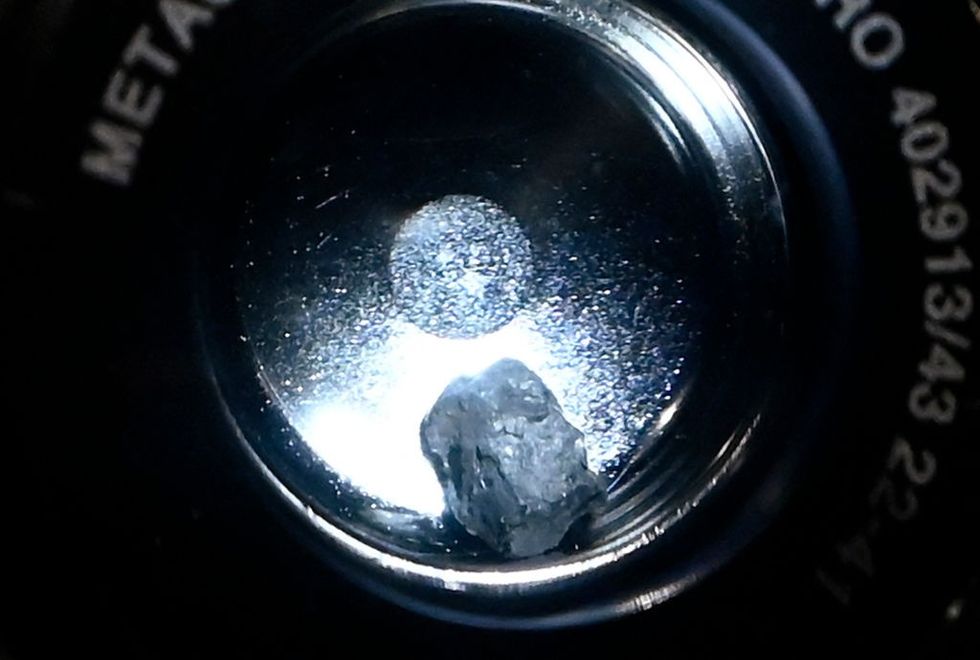Nasa reveals secrets of asteroid sample that points to 'ancient ocean world' suitable for alien life
Analysis is being conducted on the Bennu asteroid
Don't Miss
Most Read
Trending on GB News
An asteroid sample has revealed that it may have come from an ancient oceanic world.
Nasa is conducting tests into a sample from the Bennu asteroid that was found to contain large amounts of water and carbon.
Now, researchers say the asteroid may have come from a planet that potentially had suitable conditions for life.
Scientists conducting the research at the University of Arizona believe Bennu was part of a water-rich planet that existed billions of years ago.

Enceladus is believed to have a a global ocean of liquid salty water
Getty
Their investigation found that some of the dark rocks on the asteroid are coated in a thin crust of brighter material that has been observed on Saturn's moon Enceladus.
Enceladus, the sixth largest moon of Saturn, is believed to have a a global ocean of liquid salty water.
The mission's principal investigator Dante Lauretta told NewScientist: "My working hypothesis is that this was an ancient ocean world."
While Lauretta has not yet published his hypothesis or findings, he said his analysis of the material over the last few months showed that much of the rock is made of clay, including minerals called serpentites.
LATEST DEVELOPMENTS

Dante Lauretta, OSIRIS-REX principal investigator, left, and Francis McCubbin, astro materials curator at NASA, right
Getty
Serpentites are formed when rock is pushed into a seabed and exposed to water creating an exothermic reaction which generates heat.
Also, Lauretta theorised that an extremely rare calcium and magnesium-rich phosphate mineral was the cause of a bright material on the surface.
The same material is found on Enceladus, which has led many scientists to theorized that life may have started in the icy seabed.
Fabian Klenner at the University of Washington in Seattle told NewScientist: "There are indeed similarities between the mineralogy of Bennu and what has been found on Enceladus."

A sample from Bemmu went on public display for the first time
Getty
NASA's OSIRIS-REx mission dropped off samples from the asteroid Bennu in 2023 after launching to the space rock in 2016.
The space agency sent a probe to the 1,250-foot asteroid Bennu in 2020 as part of a landmark mission to collect samples.
NASA chose to sample Bennu because it is believed to be rich in organic compounds.
Lauretta added: "We're going back to the dawn of the solar system, we're looking for clues as to why Earth is a habitable world, this rare jewel in outer space that has oceans, it has a protective atmosphere."









